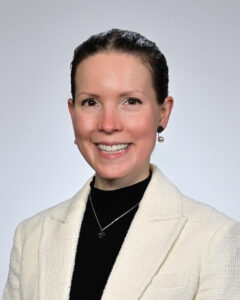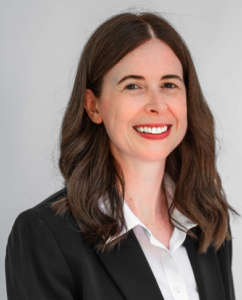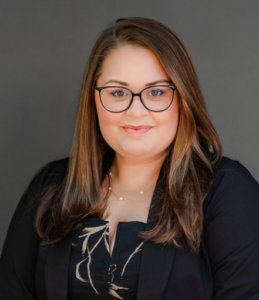Authors: Bethany Fenton, Meghan Etsey, Mallory Johnson, and Dr. Ariela Marshall on behalf of AMWA’s Gender Equity Task Force
Sarah entered her surgery clerkship eager to learn, but her excitement quickly eroded to dread when an attending surgeon made openly discriminatory remarks in the operating room. Such comments, framed as casual banter, created a hostile environment. Sarah’s story is far from isolated. Her experience reflects broader patterns: in a UK survey, one-fifth of medical students reported bullying or harassment within eight months of starting clinicals (Timm, 2014). Qualitative interviews reveal patterns of abusive hierarchies, exclusion, and discrimination based on race, gender, sexual orientation, and disability (Griffin & Baverstock, 2023). Research form general populations show that women’s experiences with gender based violence support systems further highlight how intersecting factors such as racialisation, poverty, and multidimensional violence create barriers often overlooked in one-size-fits-all models, underscoring the need for gender-sensitive, contextually tailored interventions to improve outcomes and advance equity (Ensue et al., 2025). Mistreatment also appears more common in medicine than in other fields: nearly 70% of medical students reported inadequate treatment during rotations, compared with about 32–33% of civil engineering or teaching students (Bormuth et al., 2021). The harassment faced by medical students unfortunately intensifies once trainees reach residency, with women residents enduring disproportionately high rates of mistreatment. A comprehensive meta‑analysis spanning over 44,000 residents reveals that bullying affects approximately half of all medical residents globally (51%), with female and minority-identifying residents at significantly higher risk (Alvarez et al., 2023). These alarming figures underscore the persistence- and escalation- of harassment as medical trainees advance in their careers, exacerbated by increasing pressures and rigid hierarchies.
The culture of harassment and bullying in medicine is likely both derived from as well as perpetuated by the hierarchical culture of medicine. Often, perpetrators are attending physicians—those who hold the most power and control over evaluations, recommendations, and career opportunities. Within this steep hierarchy, silence becomes a survival strategy, leaving trainees to shoulder the emotional toll while abusers face little consequence. As Siad and Rabi argue, such behaviors persist not from ignorance but from entrenched cultural norms: power gradients discourage speaking up, and weak institutional ethics ensure that misconduct remains unchecked. Additionally, another insidious force is the “hidden curriculum”, —the informal modeling of behavior by attending physicians. Where harassment by senior physicians is normalized, it becomes part of the social fabric that is passed down through observation and imitation, perpetuating the cycle. Faculty harassment and trainee harassment are strongly correlated within specialties, suggesting that abusive behaviors are passed down through socialization rather than formally taught (Siad and Rabi, 2021).
Structural and systemic factors further compound the problem. Institutions grounded in meritocratic and tenure-based systems concentrate power at the top, shielding senior physicians from accountability and normalizing toxic behavior. Reporting mechanisms are often seen as ineffective or risky— trainees worry that raising complaints may harm their careers more than the harassment itself. In many cases, individuals who speak out are subtly labeled as troublemakers, reinforcing silence (Siad and Rabi, 2021). The National Academies of Sciences, Engineering, and Medicine (NASEM) report confirmed the scope: sexual harassment is nearly twice as common in academic medicine as in other sciences, with almost half of trainees reporting faculty or staff misconduct—fueling burnout, attrition, and loss of talent (NASEM, 2018).
To challenge this harmful culture, the NASEM report outlines clear steps for change including having institutions directly address gender harassment, enhance transparency and accountability through clear policies and fair investigations, and build inclusive environments that reduce power imbalances between faculty and trainees (NASEM, 2018). It emphasizes equitable hiring, promotion, and mentoring structures to foster a supportive, collaborative culture. Additionally, the report stresses prioritizing safe reporting mechanisms and robust protections for those who experience harassment (NASEM, 2018).
We agree with these recommendations and also feel that stronger consequences should be imposed on attendings or physicians who harass or bully residents, including removal from teaching duties or termination, to ensure accountability and protect trainees. Ultimately, shifting from tolerance of misconduct to a culture of respect, equity, and accountability is essential to reshape the future of medicine into one where all trainees can thrive. We believe that moving forward requires institutions to:
- Directly confront gender harassment, recognizing it as the most common and often overlooked form of misconduct that enables more severe abuse.
- Ensure transparency and accountability through clear, accessible policies, fair and timely investigative processes, and meaningful disciplinary consequences.
- Create inclusive and equitable environments by reforming hiring, promotion, and recognition structures to dismantle conditions where mistreatment thrives.
- Reduce power imbalances by replacing single-investigator dependency with mentoring networks or committee-based advising, fostering both protection and collaboration.
- Strengthen support for those affected by offering safe reporting options, robust protections against retaliation, and accessible resources for recovery.
These steps lay the groundwork for a necessary cultural shift in medicine, one that rejects tolerance of misconduct and actively builds a climate of respect, equity, and accountability where all trainees can thrive.
References:
Álvarez Villalobos, N. A., De León Gutiérrez, H., Ruiz Hernandez, F. G., Elizondo Omaña, G. G., Vaquera Alfaro, H. A., & Carranza Guzmán, F. J. (2023). Prevalence and associated factors of bullying in medical residents: A systematic review and meta‑analysis. Journal of Occupational Health, 65(1), e12418. https://doi.org/10.1002/1348-9585.12418
Bormuth, S., Ackermann, H., & Schulze, J. (2021, February 15). Inadequate treatment in internships: A comparison between medical and other students. GMS Journal for Medical Education, 38(2), Doc45. https://doi.org/10.3205/zma001441
Essue, B. M., Chadambuka, C., Perez-Brumer, A., Arruda-Caycho, I., Tocallino, D., Balasa, R., Namyalo, P. K., Ravanera, C., & Kaplan, S. (2025). Women’s experiences of gender-based violence supports through an intersectional lens: A global scoping review. BMJ Public Health, 3(1), e001405. https://doi.org/10.1136/bmjph-2024-001405
Griffin, L., & Baverstock, A. (2023). Medical student perceptions and experiences of incivility: A qualitative study. BMC Medical Education, 23(1), Article 404. https://doi.org/10.1186/s12909‑023‑04354‑6
National Academies of Sciences, Engineering, and Medicine. (2018). Sexual Harassment of Women: Climate, Culture, and Consequences in Academic Sciences, Engineering, and Medicine. Washington, DC: The National Academies Press. https://doi.org/10.17226/24994
Schlick, C. J. R., Ellis, R. J., Etkin, C. D., & colleagues. (2021). Experiences of gender discrimination and sexual harassment among residents in general surgery programs across the US. JAMA Surgery, 156(10), 942–952. https://doi.org/10.1001/jamasurg.2021.3195
Siad, F. M., & Rabi, D. M. (2021). Harassment in the field of medicine: Cultural barriers to psychological safety. CJC Open, 3(12 Suppl), S174–S179. https://doi.org/10.1016/j.cjco.2021.08.018
Timm, A. (2014). ‘It would not be tolerated in any other profession except medicine’: Survey reporting on undergraduates’ exposure to bullying and harassment in their first placement year. BMJ Open, 4(7), e005140. https://doi.org/10.1136/bmjopen‑2014‑005140
About the Authors
Bethany Fenton is a fourth year medical student from St. George’s University. She holds a Master of Science in Nutritional Sciences from the University of Kentucky and received a Bachelor of Science in Dietetics from Eastern Kentucky University. She worked as a critical care dietitian for ten years prior to pursuing medical school. She is also a member of the Gender Equity Task Force and Nutrition and Medicine Working Group Committees within the American Medical Women’s Association. When she’s not studying, you can find her spending time with her husband and cats, using her Holga camera for experimental photography, lifting weights at the gym, playing board games, and reading science fiction novels.
Meghan Etsey is a fourth year medical student from St. George’s University. She has a Bachelors of Arts in Biology and a Bachelors of Arts in Nutrition and Dietetics from Bluffton University in Bluffton, Ohio. She served as the President of the St. George’s University’s Women in Medicine chapter in St. George, Grenada where she expanded relationships with the community and worked towards educating women and helping the youth. She is also a member of the Gender Equity Task Force and Sex and Gender Health Collaborative Committees within the American Medical Women’s Association. When she is not pursuing medicine, you can find her with her friends and family on different road trips and adventures exploring the world.
Mallory Johnson is a fourth-year medical student from St. George’s University. She holds a Bachelor of Science in Forensic Science and a Bachelor of Science in Chemistry from Tiffin University. She worked as an Analytical Chemist at P&G and KAO before medical school. She is passionate about giving back to vulnerable communities and providing equal access and opportunity to medical care. She is a member of the Domestic Violence and Music in Medicine Committees within the American Medical Women’s Association. When she’s not doing schoolwork, you can find her playing her cello, reading cozy mysteries, and playing with her poodles, Gertie and Maple.
 Dr. Ariela Marshall, MD
Dr. Ariela Marshall, MD
Dr. Ariela Marshall is a Harvard-trained physician and an internationally renowned advocate, career development advisor, and mentor. Dr. Marshall specializes in bleeding and clotting disorders, especially as they relate to women’s health. She has worked at Mayo Clinic and the University of Pennsylvania and currently practices part-time as a consultative hematologist at the University of Minnesota. In addition to her clinical work, Dr. Marshall is a highly respected leader, mentor, and speaker. She is an active leader with the American Society of Hematology (where she led efforts to found the Women in Hematology Working Group and currently holds seats on the Women in Heme Working Group, Committee on Communications and Media Experts Subcommittee) and American Medical Women’s Association (leading the Infertility Working Group and holding seats on the Gender Equity Task Force). She is the Chief Innovation Officer at Women in Medicine and the Curriculum Chair at IGNITEMed, which are both 501(c)(3) nonprofit organizations dedicated to promoting career development for women in medicine. She speaks regularly on a national and international scope to discuss her efforts to advance career development and mentorship for physicians, gender equity, fertility/infertility awareness, parental health and wellbeing, reproductive health and rights, and work-life integration.



